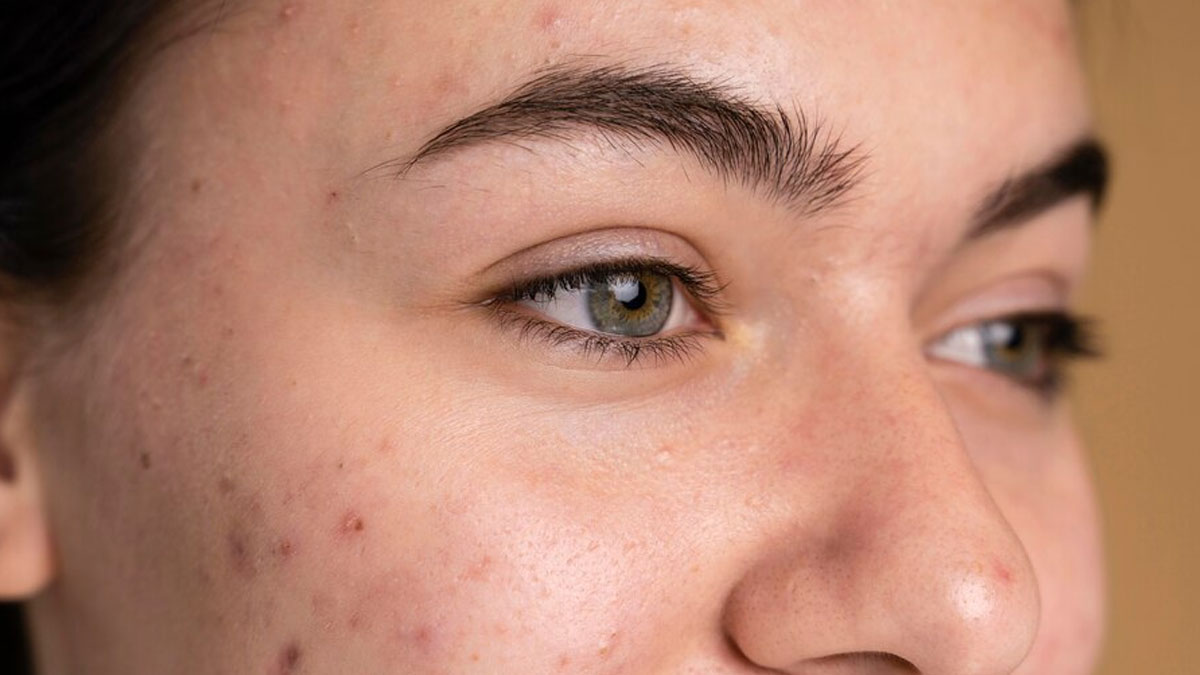
Dark spots on the forehead, also known as hyperpigmentation, are a frequent and irritating skin condition. Sun exposure, hormone fluctuations, acne scars, and ageing are all potential causes of these patches. While they are normally harmless, many people want to diminish their appearance for cosmetic reasons. Here's a complete method on removing black spots from your forehead.
Table of Content:-

Understanding the Root Causes
Before diving into the treatments, it’s essential to understand the common causes of dark spots on the forehead:
- Sun Exposure: Ultraviolet (UV) rays from the sun can stimulate the production of melanin, leading to sunspots or age spots.
- Hormonal Changes: Conditions like melasma, often triggered by pregnancy, birth control pills, or hormone replacement therapy, can cause dark patches on the skin.
- Post-Inflammatory Hyperpigmentation (PIH): This occurs after an injury or inflammation of the skin, such as acne, eczema, or psoriasis.
- Aging: As we age, our skin's ability to regenerate and repair itself slows down, leading to dark spots.
- Genetics: Some people are genetically predisposed to developing dark spots.
Also read: Mulethi For Reducing Dark Spots: Expert Explains How It Reduce Hyperpigmentation And How To Use It
Treatment Options
1. Topical Treatments
Topical treatments are often the first line of defense against dark spots. Some effective ingredients like Vitamin C, which is an antioxidant that brightens the skin and reduces the appearance of dark spots by inhibiting melanin production. Also, known as vitamin B3, it helps reduce pigmentation and improve skin elasticity. This naturally occurring acid can help reduce hyperpigmentation and is particularly useful for those with acne-prone skin. Kojic Acid is derived from fungi, kojic acid can lighten pigmentation and is commonly found in skin-brightening products.

2. Chemical Peels
Chemical peels involve applying a solution to the skin that causes it to exfoliate and eventually peel off. This process removes the upper layers of skin, revealing newer, less pigmented skin underneath. Peels can vary in strength:
- Superficial Peels: Use mild acids like alpha hydroxy acids (AHAs) and are suitable for minor discoloration.
- Medium Peels: Use stronger acids like trichloroacetic acid (TCA) and penetrate deeper, addressing more pronounced pigmentation.
- Deep Peels: Use potent acids like phenol and are used for severe pigmentation but require a longer recovery period.
3. Laser Treatments
Laser treatments target melanin in the skin with concentrated light, breaking up the pigment and allowing the body to remove it naturally. Common laser treatments for dark spots include:
- Fractional Laser Resurfacing: Targets the deeper layers of skin to promote collagen production and skin renewal.
- Intense Pulsed Light (IPL): Uses broad-spectrum light to target pigmentation without damaging the surface of the skin.
4. Microdermabrasion and Dermabrasion
These procedures exfoliate the skin, promoting the regeneration of new skin cells and reducing pigmentation.
- Microdermabrasion: Uses a special device to spray fine crystals onto the skin, gently exfoliating the outer layer.
- Dermabrasion: A more intensive procedure that sands the skin to remove the upper layers, suitable for more severe pigmentation.
5. Natural Remedies
For those who prefer a natural approach, several remedies can help lighten dark spots:
- Aloe Vera: Contains aloin, a natural depigmenting compound.
- Lemon Juice: High in vitamin C, it can lighten dark spots. However, it can be irritating, so it should be used with caution and diluted if necessary.
- Turmeric: Contains curcumin, which has anti-inflammatory and skin-brightening properties.
- Apple Cider Vinegar: Contains acetic acid, which may help lighten pigmentation.
- Green Tea Extract: Rich in antioxidants that can help reduce pigmentation.
Also read: Dark Spots On Skin During Summers: Here’s How You Can Prevent Hyperpigmentation
Prevention Tips
Preventing new dark spots from forming is crucial for maintaining results:
- Sunscreen: Use a broad-spectrum sunscreen with an SPF of 30 or higher daily, even on cloudy days.
- Protective Clothing: Wear hats and sunglasses to shield your skin from the sun.
- Avoid Peak Sun Hours: Stay out of the sun between 10 a.m. and 4 p.m. when UV rays are strongest.
- Healthy Skincare Routine: Cleanse and moisturize your skin daily, and use products suitable for your skin type.
Dark spots on the forehead can be effectively managed and reduced with the right combination of treatments and preventive measures. Whether you choose over-the-counter products, professional treatments, or natural remedies, consistency is key.
Always consult with a dermatologist to determine the most appropriate treatment plan for your skin type and condition. With patience and proper care, you can achieve a more even and radiant complexion.
Also watch this video
How we keep this article up to date:
We work with experts and keep a close eye on the latest in health and wellness. Whenever there is a new research or helpful information, we update our articles with accurate and useful advice.
Current Version
